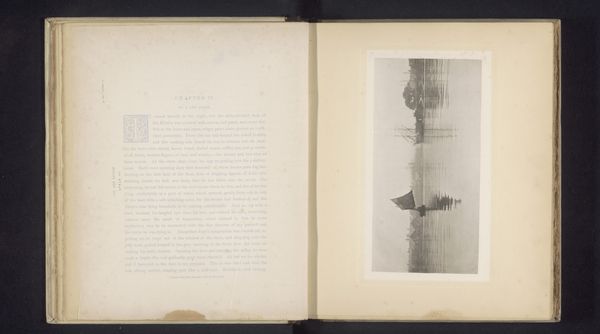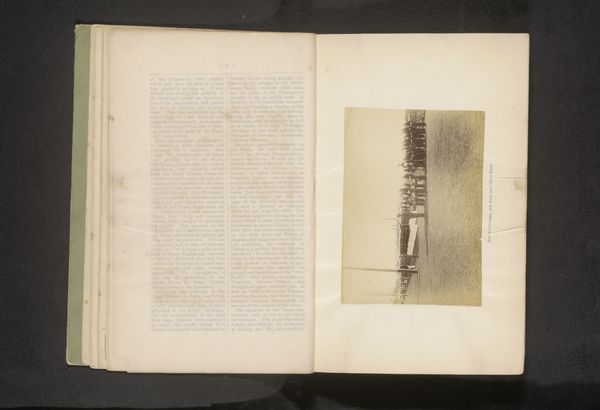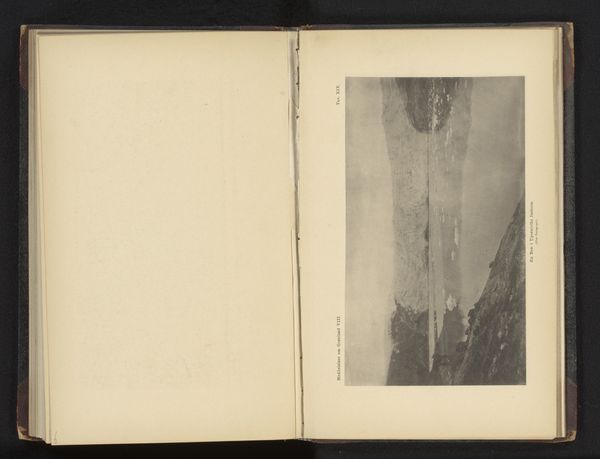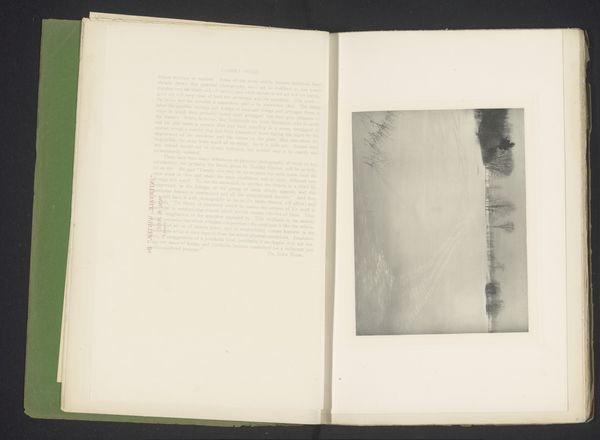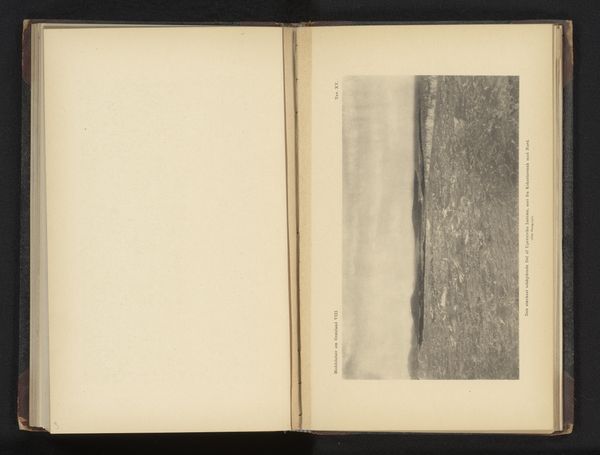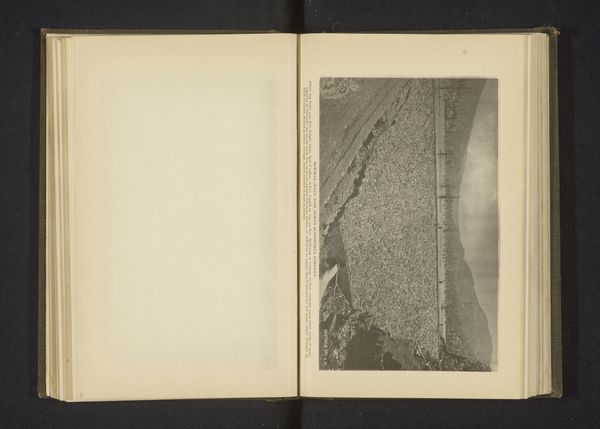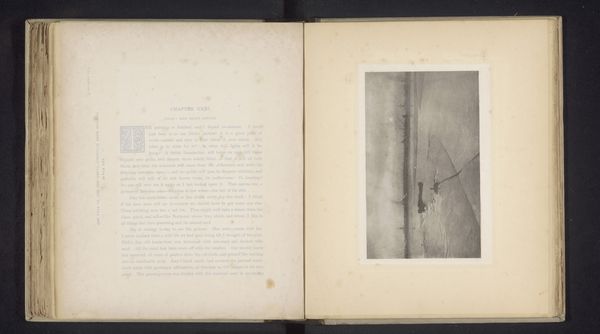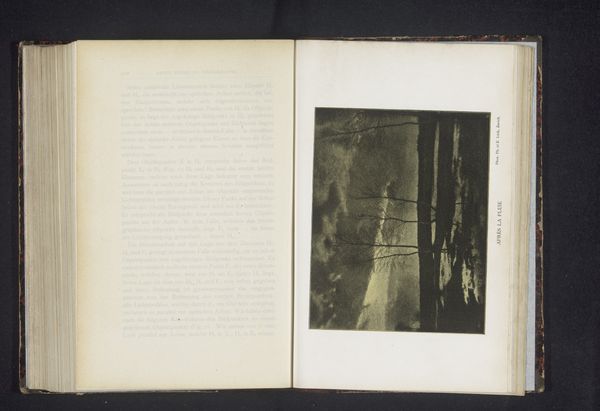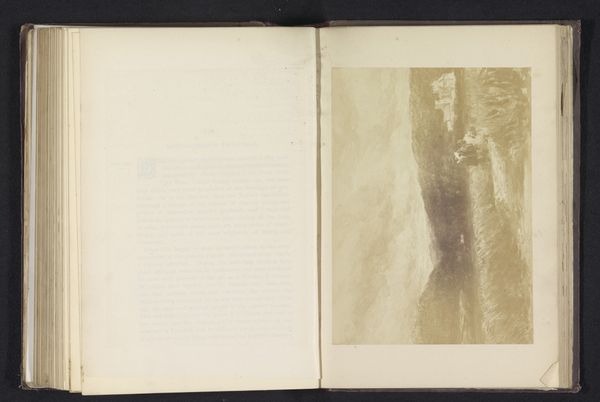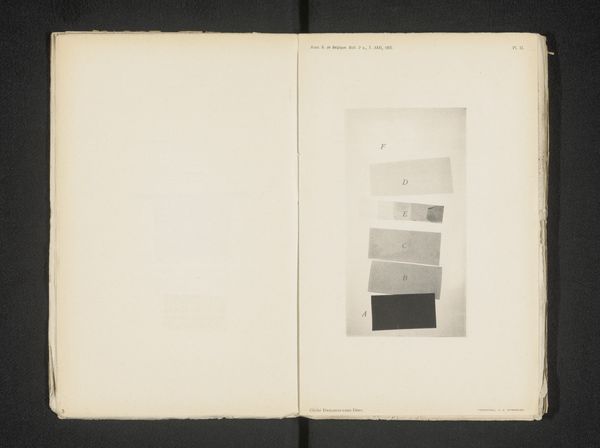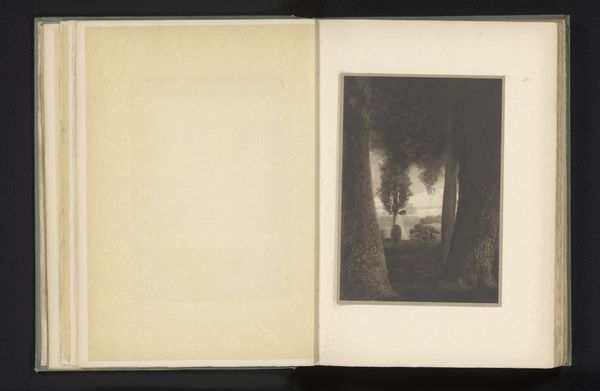
print, photography, gelatin-silver-print
# print
#
landscape
#
photography
#
gelatin-silver-print
#
modernism
Dimensions: height 158 mm, width 118 mm
Copyright: Rijks Museum: Open Domain
Curator: We’re looking at a gelatin-silver print, believed to be created before 1890 by Alfred Algrain. The work is titled "View of a Sinking Ship at Sunset or Sunrise". What strikes you initially? Editor: Immediately, there's this profound sense of melancholic stillness, the grainy texture adding to the feeling. The horizon divides the frame almost exactly in half, and it creates such stark, elemental drama. Curator: Algrain manipulates tonal contrast beautifully. The sun—or moon perhaps—hangs in the sky like a perfect orb, its reflection diffused across the water's surface. Those dark, linear shapes...they pull the eye down. Editor: Yes, it’s those very "shapes," as you call them, that command my attention, but in terms of socio-political narratives. What class of people were likely onboard that ship? How does that affect my reading of a scene of such stark contrast between dark and light? Considering that maritime tragedies often affected sailors and laborers, do these lines evoke themes of class struggle against an oppressive seascape? Curator: The composition employs minimalism unusually. If you reduce this down, the sun becomes merely an illuminated spot against the horizon. We should understand how the interplay of water and light speaks more to the infinite and sublime as aesthetic features. Editor: I respect that view, but it would seem ignorant to see beauty when this composition invites considerations beyond form. Aren't you concerned that our analyses would omit vital conversations concerning capitalism, class disparity, environmental responsibility and colonialism by framing Algrain’s creation as mere “aesthetic features?” Curator: Algrain certainly offers both experiences here— the formally interesting and the historically poignant. In balancing this paradox, perhaps he allows for varied contemplation? Editor: I think, too, we're acknowledging its power to provoke necessary dialogues on inequity that we might otherwise try to obscure in history. Curator: Ultimately, Alfred Algrain has forged both a poignant portrait of loss and also an aesthetic engagement using purely visual components.
Comments
No comments
Be the first to comment and join the conversation on the ultimate creative platform.
